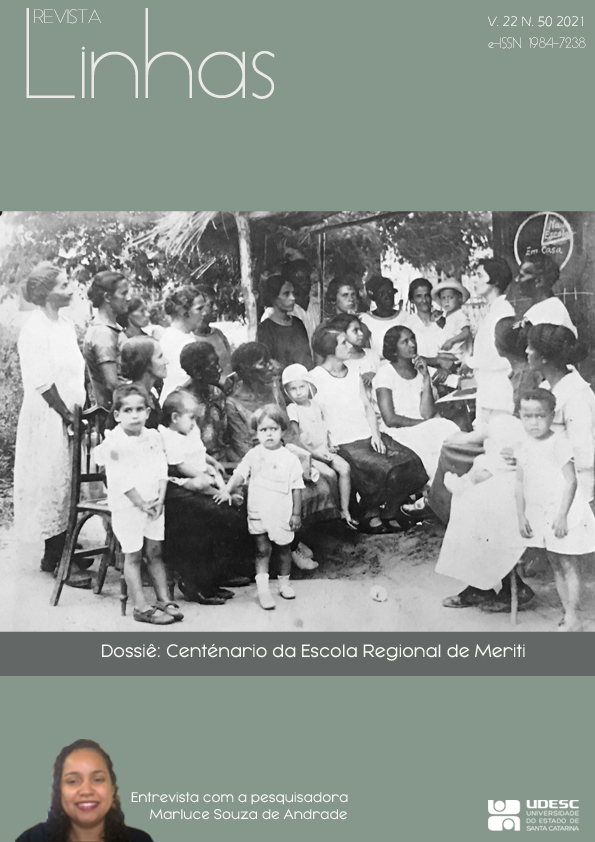Videogames como conteúdo? Contribuições para uma proposta de ensino baseada na pedagogia dos multiletramentos
DOI:
https://doi.org/10.5965/1984723822502021320Palabras clave:
jogos digitais, multiletramentos, educação, designResumen
Este ensaio tem como objetivo sistematizar e socializar as contribuições para uma proposta de ensino de jogos digitais alicerçada na pedagogia dos multiletramentos. Trata-se de uma reflexão teórica que se baseia na bibliografia pertencente ao campo de investigação dos videogames. Como resultado, descrevem-se os processos de conhecimento e as atividades de aprendizagem com base na prática situada, na instrução explícita, no enquadramento crítico e na prática transformada. Por fim, evidencia-se a compatibilidade entre as orientações pedagógicas dos multiletramentos e os jogos digitais como domínio semiótico.
Descargas
Citas
BRATHEWAITE, Brenda; SCHREIBER, IAN. Challenges for game designers:non-digital exercises for videogame designers. Boston: Cengage Learning, 2009.
COPE, Bill; KALANTZIS, Mary. A grammar of multimodality. The International Journal of Learning, Melbourne , v. 16, n. 2, 2009a. Disponível em: http://ijb.cgpublisher.com/product/pub.30/prod.2057. Acesso em: 7 abr. 2013.
COPE, Bill; KALANTZIS, Mary. “Multiliteracies”: new literacies, new learning. Pedagogies: An International Journal, London, n. 913479273, 2009b. Disponível em: http://www.tandfonline.com/doi/abs/10.1080/15544800903076044. Acesso em: 7 abr. 2013.
COPE, Bill; KALANTZIS, Mary. New media, new learning. In: COLE, Darren R.; PULLEN, David L. (org.). Multiliteracies in motion:current theory and practice. London: Routledge, 2009c. p. 85-104. Disponível em: http://newlearningonline.com/multiliteracies/files/2009/03/colenewmedianewlearningchapter.pdf. Acesso em: 12 mar. 2013.
CORNISH, Sara et al. The game jam guide. Pittsburgh: ETC Press, 2017.
COSCARELLI, Carla Viana; KERSCH, Dorotea Frank. Prefácio. In: KERSCH, Dorotea Frank; COSCARELLI, Carla Viana; CANI, Josiane Brunetti (orgs.). Multiletramentos e multimodalidade:ações pedagógicas aplicadas à linguagem. Campinas: Pontes Editores, 2016. p. 7-14.
CRUZ JUNIOR, Gilson. Gaming, cultura e ciberespaço: sobre o “mimimi” em torno de Mass Effect 3 e a compreensão “crítica” dos jogos digitais. Licere, Belo Horizonte, v.17, n. 4, p. 61-84, 2014.
CRUZ JUNIOR, Gilson. O delinquente em cada um de nós: uma introdução à pedagogia do “mau exemplo” nos videogames. Curitiba: Editora CRV, 2017.
CSIKSZENTMIHALYI, Mihalyi. Fluir: una psicologia dela felicidad. Barcelona: EditoraKairós, 2000.
DUDENEY, Gavin; HOCKLY, Nicky; PEGRUM, Mark. Letramentos digitais. São Paulo: Parábola Editorial, 2016.
FERNANDEZ-VARA, Clara. Introduction to game analysis. New York: Routledge, 2015.
GRAY, Kishonna. Race, gender and deviance in Xbox Live: theoretical perspectives from the margins. Waltham: Elsevier, 2014.
HUNICKE, Robin; LEBLANC, Marc; ZUBEK, Robert. MDA: a formal approach to game design and game research. In: PROCEEDINGS OF THE CHALLENGES IN GAME AI WORKSHOP; Nineteenth NATIONAL CONFERENCEON ARTIFICIAL INTELLIGENCE, 19, 2004, San José-California. Anais[...]. San José-California: Stanford University, 2004.
JUUL, Jesper. A casual revolution: reinventing video games and their players. Massachusetts: MIT Press, 2010.
JUUL, Jesper. Half-real:videogames entre regras reais e mundos ficcionais. São Paulo: Blucher, 2019.
KAPP, Karl; BOLLER, Sharon. Jogar para aprender:tudo o que precisa saber sobre o design de jogos de aprendizagem eficazes. São Paulo: DVS Editora, 2018.
KOSTER, Raph. A theory of fun for game design. Arizona: Paraglyph Press, 2004.
LANKOSKI, Petri; BJORK, Staffan. Formal analysis of gameplay. In: LANKOSKI, Petri; BJORK, Staffan. Game research methods:an overview. Pittsburgh: ETC Press, 2015. p. 23-35.
MARTIN-BARBERO, Jesús. A comunicação na educação. São Paulo: Contexto, 2014.
MCGONIGAL, Jane. A realidade em jogo:porque os games nos tornam melhores e como eles podem melhorar o mundo. Rio de Janeio: Best Seller, 2012.
NEWMAN, James. Playing with videogames. New York:Routledge, 2008.
ROJO, Roxane. Gêneros discursivos do círculo de Bakhtin e multiletramentos. In: ROJO, Roxane (orgs.). Escol@ conectada:os multiletramentos e as TICs. São Paulo: Parábola, 2013. p. 13-36.
RUBERG, Bonnie; SHAW, Adrienne. Queer game studies. Minneapolis: University of Minnesota Press, 2017.
SALEN, Katie; ZIMMERMAN, Eric. Regras do jogo:fundamentos do design de jogos. São Paulo: Blucher, 2012.
SCHELL, Jesse. A arte do game design:o livro original. Rio de Janeiro: Elsevier, 2011.
TAYLOR, T. L. Raising the stakes:e-sports and the professionalization of computer gaming. Massachusetts: MIT Press, 2012.
ULICSAK, Mary; WILLIAMSON, Ben. Computer games and learning: a futurelab handbook. London: Futurelab, 2010.
WOODCOCK, Jamie. Marx at arcade:consoles, controllers and class struggle. Chicago: Haymarket Books, 2019.
ZAGAL, José. A Framework for games literacy and understanding games. Future Play 2007, Ontário, p. 33-40, 2008.
Descargas
Publicado
Cómo citar
Número
Sección
Licencia
Derechos de autor 2021 Revista Linhas

Esta obra está bajo una licencia internacional Creative Commons Atribución-NoComercial-SinDerivadas 4.0.
Os artigos publicados pela revista são de uso gratuito, destinados a aplicações educacionais e não comerciais. Os direitos autorais são todos cedidos à revista. Os artigos cujos autores são identificados representam a expressão do ponto de vista de seus autores e não a posição oficial da Revista Linhas ou do Programa de Pós-Graduação em Educação da Universidade do Estado de Santa Catarina.

A Revista Linhas está licenciada com uma Licença Creative Commons - Atribuição-NãoComercial-SemDerivações 4.0 Internacional.


